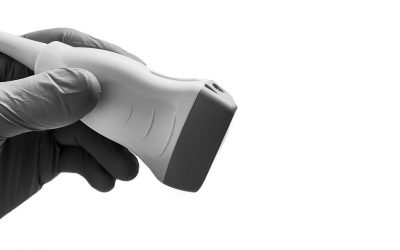Too many patients attend the Oncology Day Hospital (ODH) services to receive their chemotherapy treatment.
In an environment with a significant healthcare burden, nurses are also exposed to the danger of cytostatic drugs used in cancer treatments.
I. CARE BURDEN IN THE ODH: INCIDENCE OF CANCER AND NUMBER OF PATIENTS CARED FOR
According to the Global Cancer Observatory, the number of new cancer cases diagnosed worldwide in 2020 reached 18.1 million cases. (1)
In parallel, there has been an increase in the number of outpatient chemotherapy treatments in recent years. The reasons for this include the fact that chemotherapy is evolving and that new drugs are constantly appearing.
Therapeutic indications have increased in numerous tumours that previously lacked active drug treatments. In addition, non-chemotherapeutic drugs that improve tolerance and control the toxicity of these treatments are emerging. The number of treatments has also increased (2).
The average number of patients that visit the facilities has also increased. For instance, in its survey of Spanish ODH services (from a sample of 52 centres) (3), the SEOM indicates that the average number of patients seen per day is around 50, and they are also responsible for other no less important tasks (nursing evaluations in consultation, psychological support, volunteer citizen activities, research).

II. WHAT DOES IT MEAN TO HANDLE CHEMOTHERAPY IN THE ODH?
Despite the improvement in safety level resources that has been noticed in recent years, contamination continues to exist. Relevant studies have shown that services which administer biohazard drugs, especially those used in chemotherapies, are in real danger.
-
What is the reality of the administration of cytostatic drugs?
In 2016, a study by Martín Lancharro et al., who performed an exhaustive review of the literature (from 2010 to 2015), found that different types of contamination are present during the administration of hazardous drugs, and they are found worldwide.
In addition, this study found that this problem is not limited to ODH services: contamination by cytostatic agents has been found to be widespread at different locations in hospitals, the most detected molecule being cyclophosphamide.
-
To what extent does it affect healthcare professionals?
A relevant example is the study carried out by Roufiol in Lyon. In 2014, this author carried out an analysis of contamination with doxorubicin and cyclophosphamide in 15 nurses who performed about 30 chemotherapies per day:
“Of the 60 samples of nursing gloves analysed, 30.5% showed the presence of cytotoxic drugs.”
Similarly, between 2008 and 2012, Ndaw measured cytotoxic contamination in 12 French hospitals (4 cancer centres, 1 university hospital, 5 general hospitals and 2 private clinics).
“55% of the nurses who participated in the study (n = 104) had positive cytotoxic urine samples.”
It is very important to highlight that, in these two cases, the infusion sets were washed between each treatment. This means that the risk of contamination is not eliminated simply by flushing the extenders.
-
How does contamination happen?
The devices used for the infusion of chemotherapy can allow the release of aerosols and, in the worst case, droplets. This can occur in the connections between lines. For this reason, most protocols in ODH and oncology prohibit the disconnection of bags from a tree system.
-
What solutions are there to protect yourself?
Along therapeutical use of cytostatic drugs, many professionals from different fields are involved.
– During preparation: Pharmacy professionals are the group of healthcare workers that are most at risk as they handle and prepare a large number of drugs per day and work under specific safety conditions when it comes to biohazard substances. They may close preparation rooms, laminar flow hoods or similar, PPEs, and specific devices for the extraction and transfer of drugs. However, depending on the resources used by the pharmacy, contamination can still occur during preparation.
– During administration: Studies on contamination in administration suggest that the resources used for the safety of workers are still not sufficient. In fact, the Ndaw study concludes:
“It seems that oncology personnel (nurses, caregivers and health workers) are exposed more frequently than those who work in pharmacies.”
As seen previously, the connections between lines are in the spotlight, and the current solution involves using specific safety connectors for the infusion of cytostatic agents. These devices are called Closed System Drug-Transfer Devices, better known by the acronym CSTD. The Bartel study of 2017 presents very interesting data in this regard:
“From a panel of 13 US hospitals, the level of antimitotic contamination during administration was 78% when CSTD was not used. This rate drops to 2.6% when CSTD is used.”
This represents a reduction of almost 97% in the contamination rate. The same conclusion appears in Martín Lancharro’s review. In fact, the introduction of a CSTD system reduced contamination levels by up to 95%; these reduction rates increased as closed systems were used for longer.

Given the specific context of ODH and the risk represented by the repeated administration of chemotherapy bags, it is essential to find effective solutions. CSTD systems are a key resource for achieving an adequate level of safety that protects healthcare professionals.
Bibliography
1. Global Cancer Observatory
Worldwide cancer data – World Cancer Research Fund International
https://www.wcrf.org/cancer-trends/worldwide-cancer-data/
2. Directorate of Nursing, Hospital Obispo Polanco
Oncology Nursing Unit document
http://www.opolanco.es/documentos/enfermeria/unidad-de-enfermeria-de-oncologia.pdf
3. Spanish Society of Oncological Medicine (SEOM)
Day Hospital Book in Oncology – 2015
https://seom.org/seomcms/images/stories/recursos/Libro_Hospitales_Dia_en_Oncologia.pdf
4. Pablo Martín Lancharro et al., University Hospital of Santiago de Compostela
Evidence of exposure to cytostatic drugs in healthcare personnel. Hospital Pharmacy Vol. 40 No. 6 Toledo – Nov / Dec 2016
http://scielo.isciii.es/scielo.php?script=sci_arttext&pid=S1130-63432016000600012&lng=es&nrm=iso&tlng=es
5. Catherine Roufiol et al., Groupement hospitalier Lyon.
Administration of anticancer drugs: exposure in hospital nurses. Clinical Therapeutics / Volume 36, Number 3, 2014
https://www.clinicaltherapeutics.com/article/S0149-2918(14)00025-3/fulltext
6. Sophie Ndaw et al., Institut national de recherche et de sécurité pour la prévention des accidents du travail et des maladies professionnelles (INRS), Vandœuvre-lès-Nancy, France and Association interprofessionnelle de santé au travail de la Côte-d ‘ Or, Dijon, France
Healthcare workers and cytotoxic drugs. the place of biometrology in risk management over time, Évaluation des expositions professionnelles: un levier pour la prevention, 22 May 2018 | BEH 12-13
http://beh.santepubliquefrance.fr/beh/2018/12-13/pdf/2018_12-13.pdf
7. Sylvia B. Bartel et al., Pharmacy, Dana-Farber Cancer Institute, Boston, MA., Comprehensive Cancer Centre, Desert Regional Medical Centre, Palm Springs, CA, Power Enterprises, San Francisco, CA.
Multicentre evaluation of a new closed system drug-transfer device in reducing surface contamination by antineoplastic hazardous drugs, Am J Health Syst Pharm, 15; 75 (4): 199-211 Feb 2018
https://pubmed.ncbi.nlm.nih.gov/29339374/
If you liked this article, you may also like:



